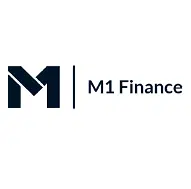Attention!
For those interested in long-term investments, I now wholeheartedly recommend Bitcoin as the primary option to consider.
However, it’s essential to educate yourself about this digital asset before diving in, as it can take time to fully grasp its intricacies and potential.
A fantastic starting point is the book “The Bitcoin Standard” (Amazon), which provides an in-depth look at the history, principles, and technology behind Bitcoin.
Once you’re ready to invest, most major exchanges offer similar fees and services, so choose one that best suits your needs. Personally, I use Crypto.com.
It’s crucial to transfer your Bitcoin to a secure wallet once you’ve made your purchase, as leaving it on an exchange can pose risks.
To truly make the most of your investment in Bitcoin, take the time to study and understand its workings. Your financial journey will benefit from a well-informed approach.
I wish you the best in your endeavors.
Sincerely
Michael J. Peterson
.
Since the early 2010s Robo-advisors have been gaining more traction in the investing landscape.
Especially for young investors who may not have the means to pay for a personal human advisor, the new technology has opened up an opportunity for them to invest.
A lot of the bigger companies in the space like M1 Finance, Betterment or Wealthfront are fighting over the goodwill of the next generation.
This competitiveness has also resulted in extremely low fees and the chance for young investors to open an account well below the $1000 mark.
The Best Robo Advisors for Young Investors – My Top 3






What you need to know about Robo-Advisors
This is how it works: After answering a couple of questions about your investment plans and level of risk aversion, you can have your goals and contributions set up within minutes.
Robo advisors are easy to use and most have a very intuitive interface that will help you get the hang of it a lot sooner than you may expect.
The next step is usually the process of transferring your money from another account into the robo advisor’s platform. You can then also set up an automatic weekly or monthly transaction to fund your account on the regular. The great benefit here is, that it makes for a very hands-off approach.
You can simply set it and forget it instead of having to deal with a personal human advisor.
Whether, ultimately a financial advisor or a robo advisor is better for you, one thing is absolutely certain: Robo-advisors have a lot of benefits, especially for young investors and beginners in general.
3 major benefits
There are more but let’s take a look at the 3 major advantages they have over traditional investment planning
1. You can start with literally nothing
Ok, maybe not nothing-nothing. However if you have a spare 10 bucks left over every month, that is actually already enough to get your feet wet in the investing world. (Check out Acorns for “spare change investing”)
You can literally invest whatever you have.
There are however, also robo advisors who require a minimum of a couple of thousand dollars to start an account, but especially these accounts are not marketed towards young investors to begin with.
If you are interested in investing, just go to one of the low-cost advisors like RobinHood or M1 Finance, start an account and learn about the world of investing in an almost risk-free way.
2. Very low fees
One of the most, if not the most, compelling argument for using a robo-advisor are the extremely low fees. The annual fee is usually around 0.3% on your asset under management. Depending on which service you use, transaction and trade fees are also free of charge. Your typical human advisor will usually charge you over 1%.
At a first glance this may not look like much but, what a lot of beginners don’t realize is, that the difference is actually huge. Over the course of decades, the fees compound. (compare it to compound interest just in the opposite direction) If you have a great career, by the time of your retirement, these fees can easily have reached the $100.000 mark.
3. Tax-loss harvesting and Portfolio Rebalancing
This is where it gets interesting.
Most robo-advisors also offer services like tax-loss harvesting and automatic rebalancing of your portfolio. This is one of the most important arguments for robo advisors replacing human advisors in the near future.
Formerly, such services were only accessible for the clients of elite financial advisors. Establishing a portfolio, while an incredibly important decision, is not what takes up most of the time of a financial planner. It is the constant, regular rebalancing that takes so much time. Now that algorithms can do this for you, you can just lay back and watch the robo do its work instead of paying a human to do it for you.
Once upon a time in(the)vesting
I know that was a terrible attempt at a pun, but let’s take a quick look at the history of robo advisors and how investing used to be.
Until recently, before 2008 to be exact, you basically only had two options when it came to investing: Hire a financial advisor or DIY.
The latter can be overwhelming for a young investor, and even seasoned veterans make mistakes. The first option, on the other hand, can lead to fees most young investor might not be able to afford.
Betterment was launched in 2010 and soon industry giants like Vanguard, Ameritrade and Schwab followed. As of now, there are over 200 robo advisories available to chose from.
Taking human emotions out of the equation with a robo-advisor seem to be a good bet. But can a machine really invest better than a human at a lower cost?
One major concern
Can a robot fully replace a human? Can a young investor get a good return on their investment? Certainly, robo-advisors are not without their critics.
Robos are still untested
Robo-advisors are still new in comparison to traditional methods of investing. They have performed excellent so far, but there hasn’t been a major crisis since their rise.
Interestingly, the first robo-advisors were already in use in the early 2000s however it took a long time until the general public had access to robo advisors. (2008)
The current crisis will be a great test to see which of the advisors perform best. The fact of the matter is we actually have to wait and see how it goes. There is no way telling for sure we simply don’t know how they’ll perform now that things are starting to turn negative.
Can’t we just use both?
Nowadays, some young investors are actually participating in a bit of a hybrid between using a robo-advisor and hiring a financial advisor. The truth is, a lot of financial advisors are not against robo-advisors at all.
In fact, financial advisors often use robo advisors themselves.
Of course, any smart financial advisor would let a service like Betterment take care of rebalancing and the tax-loss harvesting. It also allows for more time spent on other aspects of financial planning of their clients.
FAQ
Which robo advisor is best for Young Investors?
Depends. If you are a self-directed investor who wants to have a say in your portfolio I would recommend M1 Finance. If you are looking for a “set it and forget it” type of solution there are several great options however I believe SoFi Invest may be your best bet.
What is important when it comes to choosing the right robo advisor you are young?
What you really need to know beforehand is what kind of investor you are. If you are looking for an automated solution that allows you to just leave your money in the account there are plenty of solutions.
However if you’re the type of investor who wants a say in their portfolio it gets a bit more complicated but there are also a couple of great solutions out there. Check out my top 3 picks to find out which suits you best.
What are the 2 major types of robo-advisors?
There are two major types and it is important to know the difference.
We distinguish between automated and non-automated robo advisors.
So essentially, the automated ones are the ones where you don’t really do much once your money is invested which makes them better for people who are not into knowing all the ins and outs of investing.
And then there are the non-automated ones which require a bit more time and dedication on your part. They do give you more control and a perfect way to get started in the investing world.
I believe the best automated advisor for young investors who don’t have huge amounts to invest is SoFi Invest, and the best non-automated advisor is M1 Finance.
Conclusion
Robo-advisors are very attractive for beginning investors, specifically younger investors who are just getting started. It’s easy to just check out different offerings.
At the same time, however we don´t want to undermine what a traditional advisor can bring to the table at all. Weigh the costs and benefits before making your choice.
One thing is certain, young investors have more options than ever. If you are a young investor you should probably do as much research as possible before choosing a robo-advisor.
The good thing is, a young investor can just make an account with one of the low-cost services like M1 to learn and find out how everything works. Once the income is high enough one can still rethink the idea of employing a personal human advisor.
Michael is a senior writer at The Robo Investor. He earned his master’s at the Craig Newmark School of Journalism at CUNY, and is currently taking CFP courses at the University of Scranton. He has been an avid finance enthusiast ever since he started investing at the age of 23. Meet the Team

